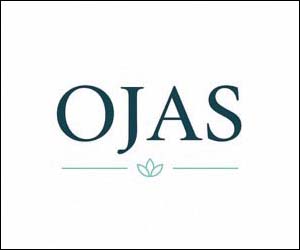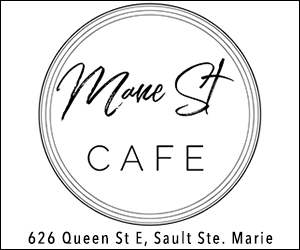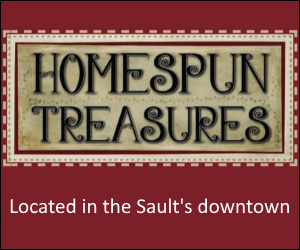Noront boss speaks up
EDITOR’S NOTE: Following are excerpts from an interview with Ernest Skinner (for Sault Business Matters) and Noront Resources president and chief executive officer Alan Coutts regarding the proposed ferrochrome smelter.
Over the past few months there has been quite a bit of publicized opposition and non endorsement by Sault Ste. Marie groups and the Batchewana First Nations that do not want the ferrochrome smelter that Noront Resources is proposing to build in Sault Ste. Marie.
I asked Noront Resources president and CEO Alan Coutts about this and also if he has had any contact with the Batchewana First Nations regarding its media release and announcement from last month.
“I haven’t had a chance to talk to them (Batchewana First Nations) at this point as it was just before Christmas (when they made their announcement.) I think it’s fair though, as we would be reluctant to approve the project at this stage too.
“It’s very very premature, there’s no information out there. At this stage, we are just completing economic assessments, and we haven’t even advanced the design work to a point where we can perform test work, so it’s really premature to make an evaluation. So it’s hard to say the project is (to be endorsed) until a lot of that work gets done. That work will get done in the next two to three years.”
Coutts then told me he was not surprised and expected that there would be opposition at this stage whether is was in the Sault, Sudbury, Timmins, or Thunder Bay.
“I don’t think we would have had a different result anywhere we go … people are somewhat skeptical and concerned about what the treatment of chromite ore entails and how it will be done responsibly.
“The onus is really upon Noront to get that work done and to start advancing the design and the test work and demonstrate that this can be done in a very very safe and healthy way.”
In regards to the Environmental Assessment and when shovels will be put in the ground, the CEO responded.
“The first piece of work we are going to do is a full economic analysis based on the SSM site. That will probably take about a year and will it be a public report and will be issued as PEA, a Preliminary Economic Assessment.
“Once that is completed, we’ll decide whether to go to ahead to the next stage of design and test work and then if that is looking encouraging, we’ll initiate an Environmental Assessment. That is way down the road in which this project is envisioned.”
Another part of the project is in regards to having roads built on First Nations land to transport the chromite to the destination of the future envisioned smelter. I asked the CEO how that was proceeding.
“Those road works are being advanced by the Province of Ontario and by the First Nations so Noront isn’t directly involved although we are a very interested party. The communities themselves are doing the EVA, and they’ve moved forward significantly. They’ve advanced a year and probably have about another year or so to go. We did see some progress on the road this past year … a 20 kilometre section from Nakina to Aroland First Nation was upgraded, so that’s an encouraging start.”
I also asked Coutts on his thoughts not only on the opposition groups against the smelter, but in particular when about 60 medical doctors signed the petition to oppose the project — given their professional standing in the community before any kind of Environmental Assessment had taken place.
“I think what you need to do is get factual information out; we want robust debate and we expect that and are not shying away from it. We want it to be fact based and again, maybe we were premature in announcing the site without having a lot of the work done.
“We thought it would be a good first step to the site before we did anymore of the design elements. People are interested and I think that’s good and it’s up to us now to provide that the necesarry information to allow people to make informed decisions.”
I asked him also about the effects of spinoff jobs and what he envisions if/when the green light to build the plant is given.
“One of the things we like about the Sault, is that there are already a lot of good companies there that could take some of the work from a fabrication point of view, an electrical infrastructure point of view, and trucking and other forms of transport.
There’s a lot of spinoffs in an operation like this and a lot of them haven’t even been envisioned yet. Certainly the bulk handling of materials will be a big item and also I think there will be an uptick in the use of the railroad. We will be creating about 500 direct jobs … and usually in the mining and manufacturing sector, you get a spinoff of maybe two or three jobs for every one job that is created directly created.”
I also asked Coutts if he has any dates available for the next town hall to speak to the community.
He responded that he has no date as of now but will be in the Sault in the next little bit at the request of some various interest groups and businesses that have expressed interest in working with Noront and want to meet do discuss possibilities. He said another town hall will be planned, but not until after they have more information to give to the public.
If the economic assessment and design work is completed and the decision is to move forward with the project, it will be in the ballpark of about two years before the Environmental Assessment is started.
Noront currently has a nickel mining project called The Eagle’s Nest which is in the traditional territory of Marten Falls First Nation and Webequie First Nation and that is Noront’s primary project right now. A memo of understanding was signed on June 6, 2019.
Coutts said he would like to stress that it’s up to Noront now to advance the work, and get the right information out in the public domain in order for the community to make an informed decision.
It looks like we are a few years out yet but those years will fly by. When the next town hall is scheduled, we will bring you up to date via Sault Business Matters.
























































